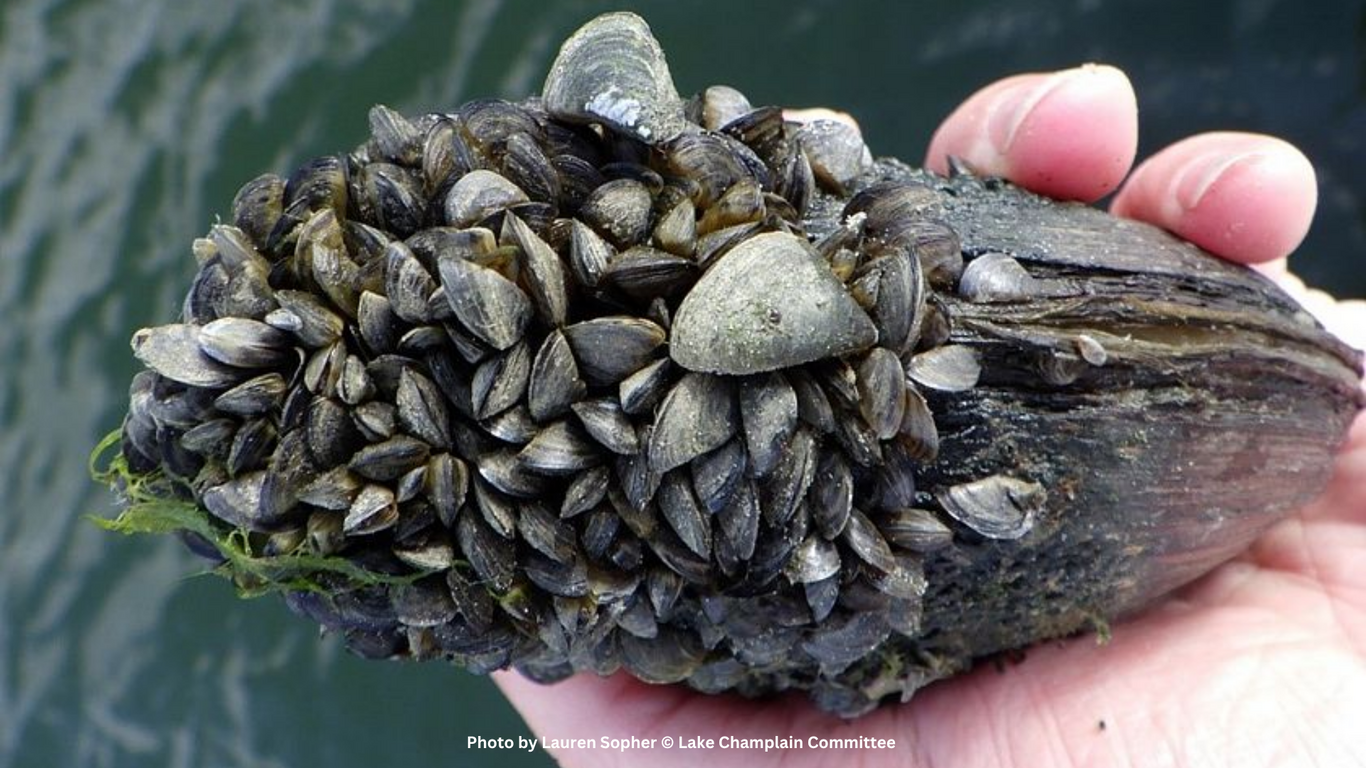Nature Note: Flexing Our Mussels
Nature Note: Flexing Our Mussels
July 2025 E-News

Lake Champlain teems with movement in the summer: fish splash, osprey dive, and kayakers paddle. Waters warmed by the July sun seem to suffuse lake life with motion. Yet there is an animal that remains slow, if not completely still, amidst the activity of the season: the freshwater mussel.
Most of us are familiar with the invasive zebra mussel, a small freshwater mollusk native to the Black and Caspian Sea regions. Zebra mussels were first discovered in the southern part of Lake Champlain in 1993 and have since spread through most of the lake’s reaches. Juvenile and adult zebra mussels can attach themselves to any hard surface in great numbers. They clog water intake pipes, foul boat hulls and engines, and obscure archeological artifacts. Ecologically, these invaders alter food webs in all directions, feeding on zooplankton and outcompeting other primary consumers. Zebra mussels also harm and even kill fish and wildlife that consume them—as filter feeders, they can contain high concentrations of toxic materials.
What about the mussels native to Lake Champlain? Freshwater mussels are under threat throughout North America, including in Lake Champlain. There are 18 species of freshwater mussel in Vermont, 15 of which are considered rare or uncommon, and 10 of which are listed under the state endangered species law.
Freshwater mussels have an extraordinary life cycle. Male mussels release sperm that female mussels siphon in to fertilize their eggs. The eggs develop into microscopic larvae, called glochidia, which are released into the water, where they attach to the gills or fins of fish—this is the parasitic stage of their life cycle. The glochidia develop into juveniles on their fish hosts and do not generally harm them, then drop off and settle on lake or river bottom sediments, where they develop into adults. Each mussel species has a specific fish host or hosts. For example, the fish hosts for Lake Champlain’s most common native mussel species, eastern elliptio (Elliptio complanata), include yellow perch, smallmouth bass, largemouth bass, chain pickerel, and sunfish. Because of this host-parasite relationship, the health of Lake Champlain’s fish populations impacts the health of native freshwater mussel populations.
Despite their small size, mussels are mighty filter feeders. They draw water into their gills through an incurrent siphon, filtering out pollutants and feeding on phytoplankton and zooplankton (tiny plants and animals). Then they release the filtered water through an excurrent siphon—like a tiny turkey baster. Mussels travel horizontally and vertically on lake and river bottoms via a single muscular “foot,” leaving an incised trail in their wake. If you follow the curved paths in the sediment, you’ll likely observe a mussel buried at the endpoint. In the spring, it is thought that mussels may move up in the sediment to aid in reproduction—some mussels have fish-like lures to attract fish for the host-parasite and dispersal phase of their life cycle. Mussels may burrow deeper within lake and river bottom substrates to stay warm in winter or to avoid being washed away during flood events. Without this seasonal vertical migration, mussels in shallow waters risk being frozen solid or swept into mobile ice cover.
Zebra mussels pose a major threat to the already endangered native mussels—they outcompete other mussels for habitat with their fast reproduction, and they can suffocate natives by attaching to their shells. As it stands, there is no effective management strategy for zebra mussels once they are introduced—the top priority is to protect areas without zebra mussels as “refugia” sites, places where the organisms can survive the challenges posed by invasives and other threats. If we want to conserve our unique native mollusks, we need to develop our understanding of good refugia sites in Lake Champlain and prevent the spread of zebra mussels.